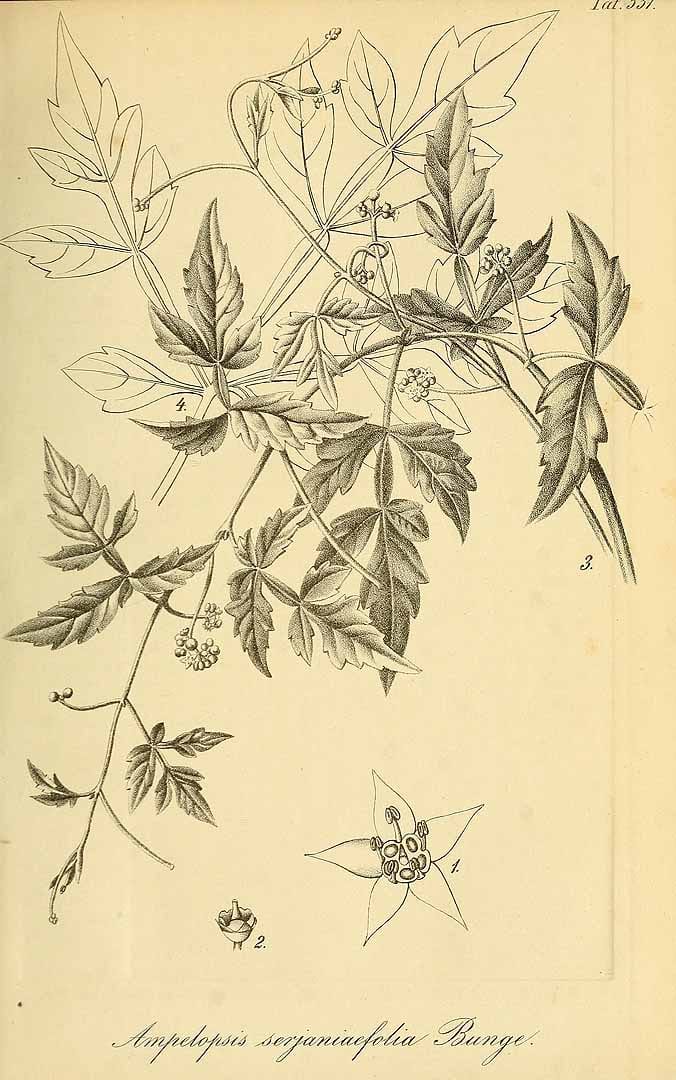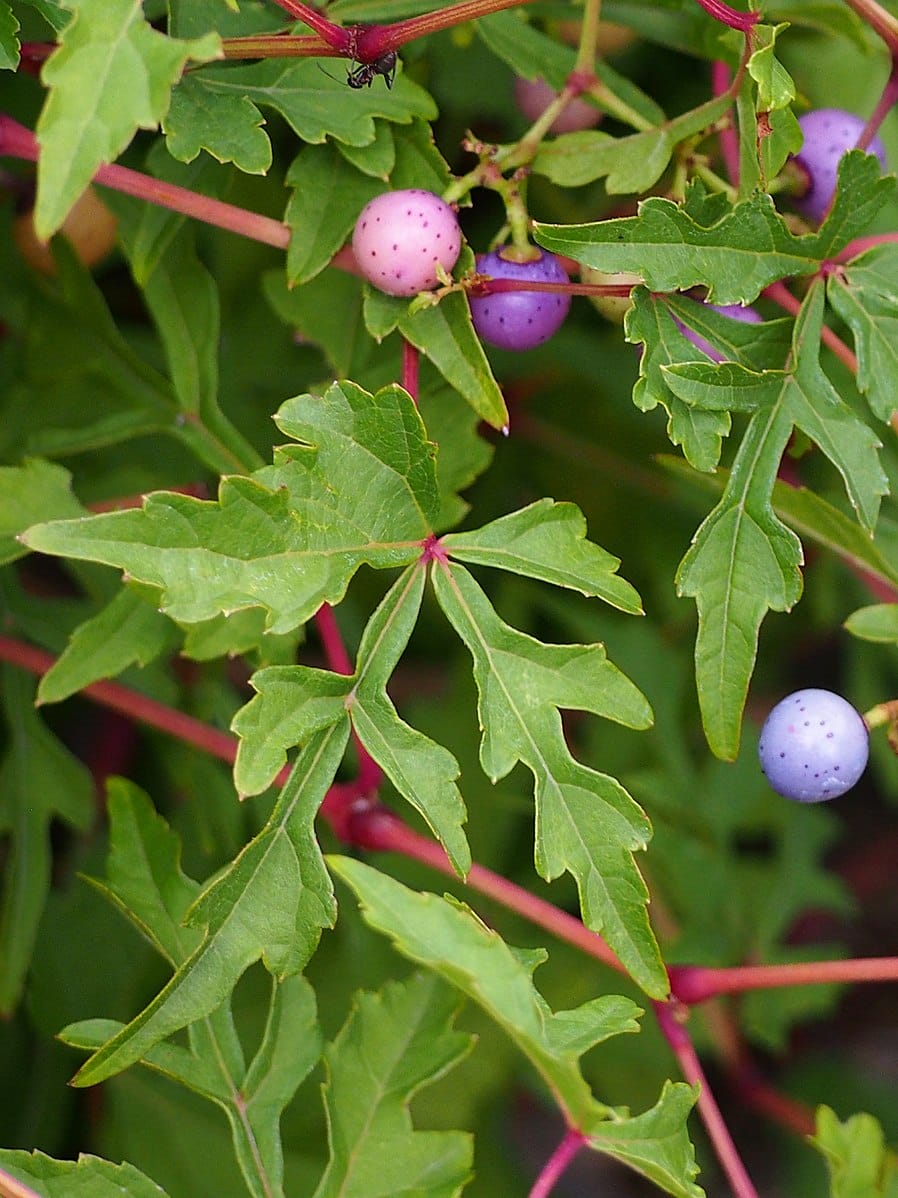Ampelopsis, Bai Lian 白蔹
Japanese AmelopsisBai Lian (TCM)
 Ampelopsis japonica
Ampelopsis japonicaRegel, E.A. von, Gartenflora (1867)
 Ampelopsis japonica
Ampelopsis japonica(Photo by Nova) (Wikimedia)
Botanical name:
Ampelopsis japonica (syn. Paullinia japonica)
A number of other species of Ampelopsis are recognised in TCM. All clear Heat and Resist Poison, however, their indications are slightly different.
Parts used:
Root
Temperature & Taste:
Slightly Cool, dry. Bitter, Pungent
Classification:
B. Clears Heat and Poison
Uses:
1. Clears Heat, Resists Poison, Resolves Swellings:
-Abscesses, Carbuncles, Boils, Phlegmon, Toxic Sores (can be used as a solo herb for this purpose, internally and topically)
-Scrofula, Lymphatic Swellings, Tuberculosis of the Lymph glands
-Burns, Scalds
-Hemorrhoids, Ulcerations, Fistulas
-Dysentery with Blood
-red, sore and swollen eyes, Pink eye
-Malarial disorders with Fever (Shen Nong Ben Cao)
-Infantile Convulsions, Epilepsy (Shen Nong Ben Cao)
-also Trauma with pain, redness and swelling
Dose:
Decoction: 5–10 grams
Powder: 2–5 grams
Washes, powder, paste or plaster for external use.
Main Combinations:
‘Often used with Bletilla Bai Ji‘ (Su Song)
1. Abscesses, Carbuncles and Toxic Sores:
i. Powder Ampelopsis and Small Red Bean (Chi Xiao Dou), mix with egg white and apply.
ii. Ampelopsis with Forsythia Lian Qiao
iii. Ampelopsis with Lonicera Jin Yin Hua, Dandelion (Pu Gong Ying)
iv. Ampelopsis with Sophora Ku Shen, Arisaema Tian Nan Xing, Gleditsia Zao Jia applied as a paste
2. Scrofula, Ampelopsis with Scrophularia Xuan Shen, Rhubarb (Da Huang). This can be taken internally and the powder mixed with vinegar to be applied topically.
3. Burns, Ampelopsis with Burnet (Di Yu) applied as a powder
4. Chapping of the skin, Ampelopsis with Phellodendron Huang Bai (equal parts), powder, mix with peanut oil and apply. (Barefoot Doctors Manual)
Major Formulas:
Cautions:
1. Avoid in cold and weakness of the Stomach
2. Traditionally viewed as incompatible with Aconite
